Few things capture the essence of summer better than biting into a slice of crisp, juicy watermelon. This refreshing fruit, packed with natural sweetness and hydrating goodness, is a favorite at picnics, family gatherings, and backyard barbecues. The good news? You don’t need a commercial farm to grow your own watermelons. With the right care and growing conditions, anyone can successfully cultivate juicy watermelons at home — whether in a spacious garden, raised bed, or even a large container.
In this comprehensive guide, you’ll learn everything you need to know about growing watermelons, from choosing the best varieties and planting techniques to watering, fertilizing, and knowing when it’s time to harvest.
Why Grow Your Own Watermelons?
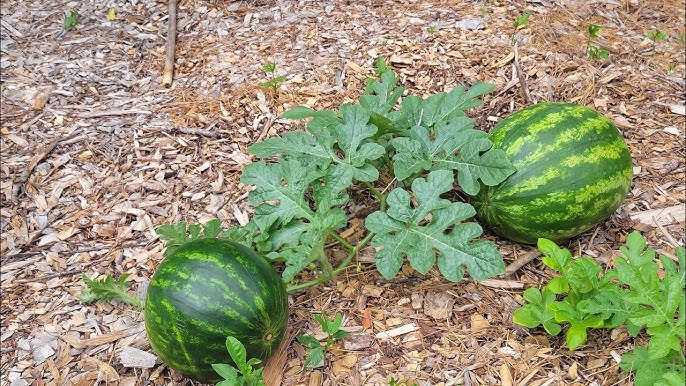
Watermelons aren’t just a summertime treat — they’re surprisingly rewarding to grow. Homegrown melons often taste sweeter and fresher than store-bought varieties, and you’ll have full control over the growing conditions, soil quality, and pesticide use. Plus, watching those sprawling vines and round fruits develop in your yard or on your patio is a satisfying experience for any gardener.
Best Watermelon Varieties for Home Gardens
Not all watermelons are created equal. Some are better suited for large open spaces, while others thrive in compact gardens or containers. When choosing your seeds, consider your available space, climate, and the fruit size you prefer.
Popular home-garden watermelon varieties:
Sugar Baby
- Small, round fruits (6–12 lbs)
- Deep red, super-sweet flesh
- Compact vines, ideal for small gardens and containers
Crimson Sweet
- Medium to large size (20–25 lbs)
- Classic striped rind with bright red flesh
- Known for its sweetness and disease resistance
Charleston Gray
- Large, oblong fruits (20–35 lbs)
- Pale green rind, crisp red flesh
- Good for areas with longer growing seasons
Golden Midget
- Early maturing, small fruits (3–5 lbs)
- Golden-yellow rind when ripe
- Perfect for patio containers
When to Plant Watermelons
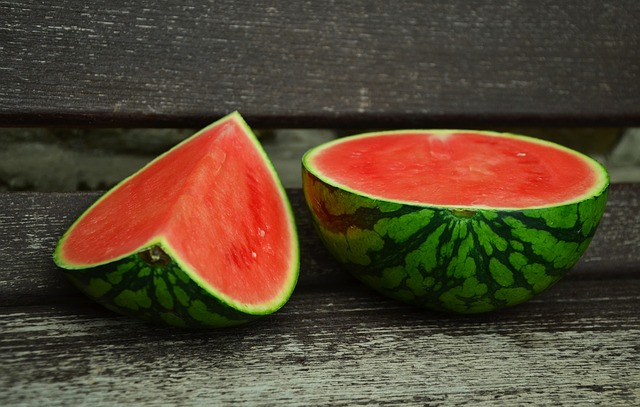
Watermelons love warm weather. To thrive, they need both warm soil and consistently warm air temperatures.
Ideal planting time:
- After the last frost date in your region
- When soil temperatures are above 65–70°F (18–21°C)
- In most regions, this falls between late spring and early summer
For a head start, you can sow seeds indoors 3–4 weeks before the last frost and transplant seedlings outdoors when conditions are ideal.
Soil Preparation and Planting
Watermelons prefer light, sandy loam soil that’s rich in organic matter and drains well.
Soil tips:
- Ideal pH: 6.0–6.8
- Mix in plenty of compost or aged manure before planting
- Avoid heavy clay soils that retain too much water
Planting guide:
- Create mounds or raised rows to improve drainage
- Plant 2–3 seeds per hill, about 1 inch deep
- Space hills 3–5 feet apart, with rows 6–8 feet apart
- Thin to the healthiest seedling per hill when they’re 2–3 inches tall
In containers: Use at least a 5–10 gallon pot per plant, with rich, well-draining soil and a sunny position.
Light and Temperature Requirements
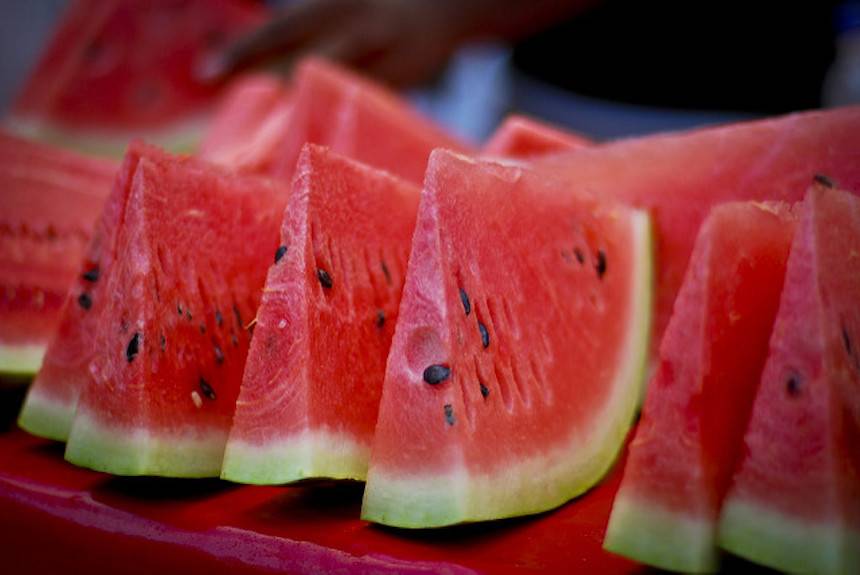
Watermelons thrive under full sun. They need a minimum of 6–8 hours of direct sunlight daily, though 10–12 hours is even better for optimal growth and fruit sweetness.
Temperature tips:
- Best daytime temperatures: 70–90°F (21–32°C)
- Nighttime temperatures: Above 60°F (16°C)
- Use black plastic mulch or floating row covers in cooler regions to warm the soil
Watering for Juicy, Sweet Fruits
Watermelons have high water needs, especially during flowering and fruit development.
Watering tips:
- Keep soil evenly moist — avoid letting it dry out or get waterlogged
- Water deeply 1–2 times per week, more during hot, dry spells
- Use drip irrigation or a soaker hose to water at the base of the plant
- Reduce watering slightly as fruits near maturity to concentrate sugars
Avoid overhead watering to prevent diseases like powdery mildew.
Fertilizing for Healthy Growth
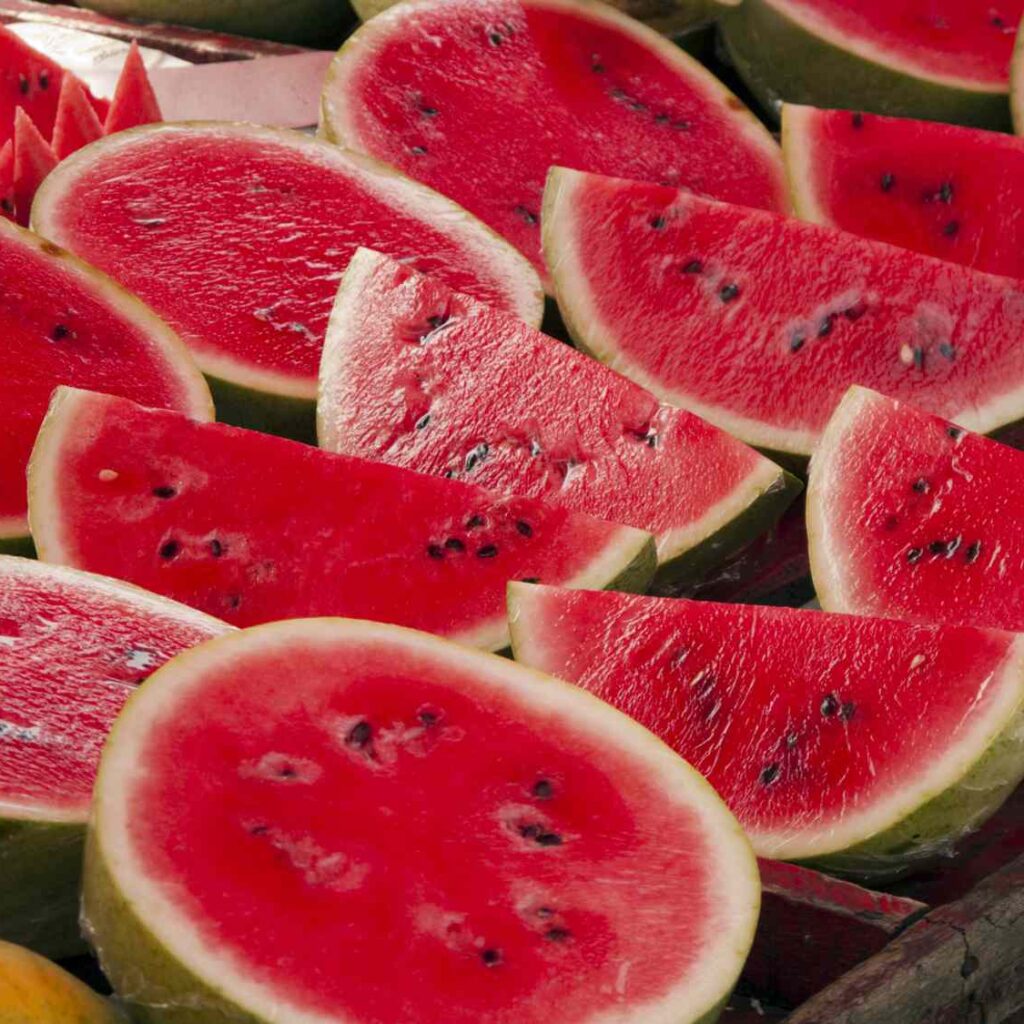
Watermelons are heavy feeders, so regular fertilization is crucial for strong vines and juicy fruits.
Fertilizing schedule:
- At planting: Mix in a balanced organic fertilizer or compost
- When vines begin growing rapidly: Use a high-nitrogen fertilizer
- At flowering: Switch to a fertilizer high in phosphorus and potassium
Apply liquid or granular fertilizer every 2–3 weeks during the growing season.
Training and Supporting Vines
Watermelon vines can quickly take over your garden space. While they naturally sprawl along the ground, you can train smaller varieties up a trellis to save space.
Trellising tips:
- Use strong, vertical supports
- Secure growing vines gently with garden twine
- Use slings made from fabric or mesh to support growing fruits
This improves air circulation, reduces pests, and keeps fruits clean.
Pest and Disease Management
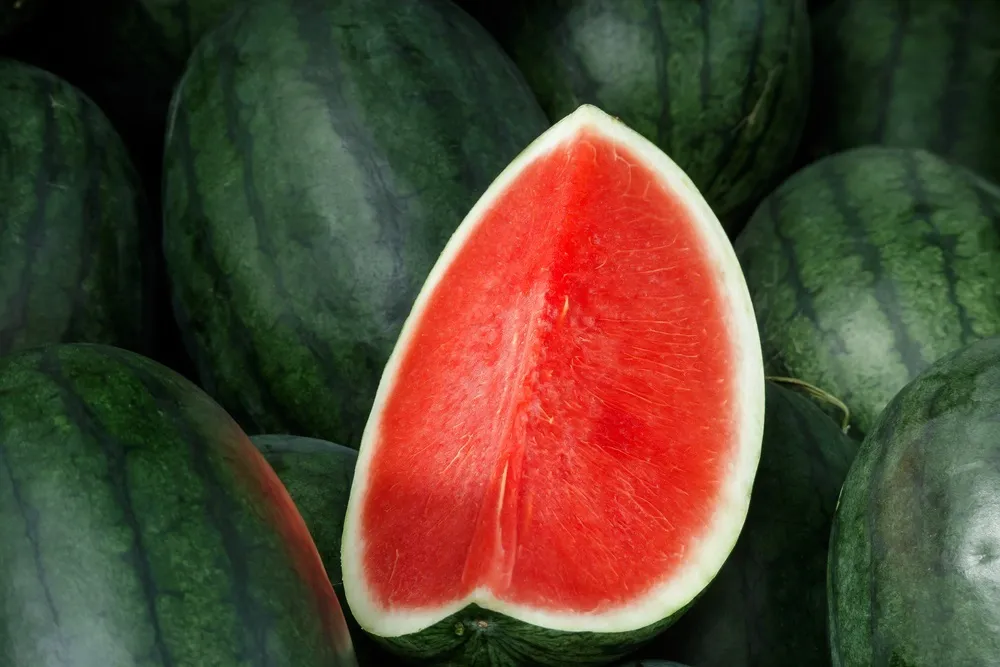
Common watermelon pests include:
- Aphids
- Cucumber beetles
- Squash bugs
- Spider mites
Natural pest solutions:
- Insecticidal soap or neem oil sprays
- Floating row covers
- Handpicking pests early
Common diseases include:
- Powdery mildew
- Fusarium wilt
- Anthracnose
Prevention:
- Rotate crops yearly
- Maintain good air circulation
- Avoid overhead watering
How to Know When Your Watermelons Are Ripe
Patience is key when waiting for your melons to ripen. Picking too early means bland, watery fruit.
Signs of ripeness:
- The tendril nearest the fruit turns dry and brown
- The underside (ground spot) turns creamy yellow
- The rind changes from shiny to dull
- A deep, hollow sound when tapped
Check your seed packet for expected maturity time — most varieties take 70–100 days from planting.
Harvesting and Storing Watermelons
Use a sharp knife or garden shears to cut the fruit from the vine, leaving about 1 inch of stem attached.
Storage tips:
- Whole watermelons can stay at room temperature for about a week
- Refrigerate for up to 2–3 weeks
- Once cut, cover and refrigerate slices, consuming within a few days
Enjoying Your Harvest
Your homegrown watermelons are perfect for:
- Chilled slices at picnics
- Fruit salads and salsas
- Smoothies and juices
- Frozen watermelon popsicles
- Grilled watermelon skewers
Nothing beats the satisfaction of biting into a sweet, homegrown watermelon on a hot summer’s day.
Final Thoughts
Growing juicy watermelons isn’t just a task for large farms. With the right care, timing, and environment, any home gardener can produce sweet, plump melons bursting with flavor. Whether you plant them in your backyard, a raised bed, or a large container, this fruit thrives under full sun, well-draining soil, and regular watering.
By following this complete guide — from selecting the perfect variety to harvesting at peak ripeness — you’ll enjoy a rewarding, refreshing summer harvest straight from your own garden.

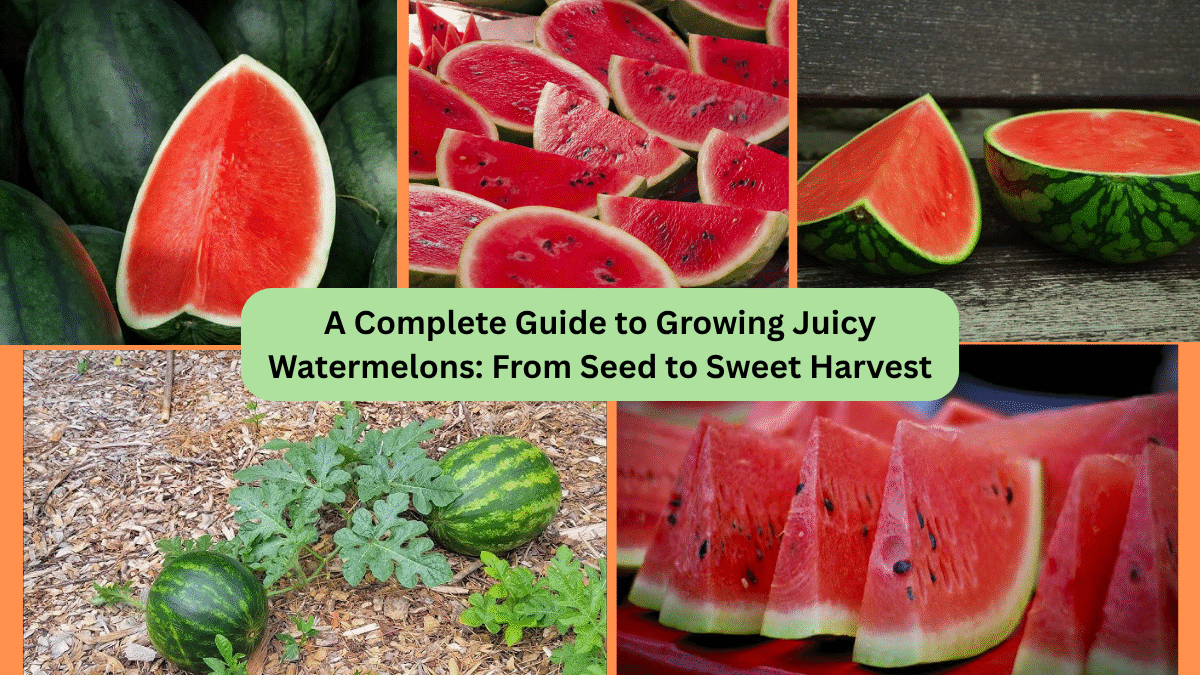




Leave A Comment